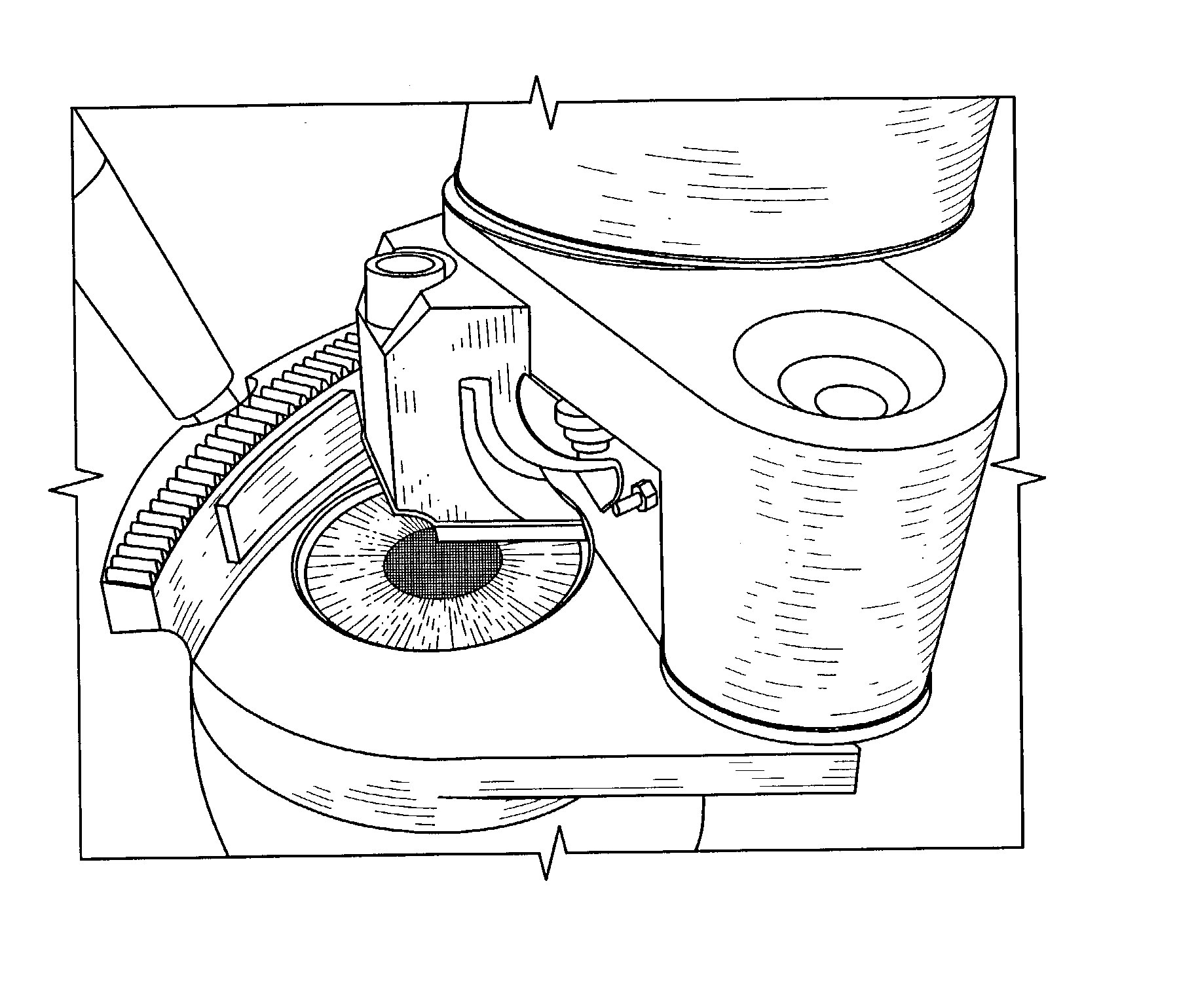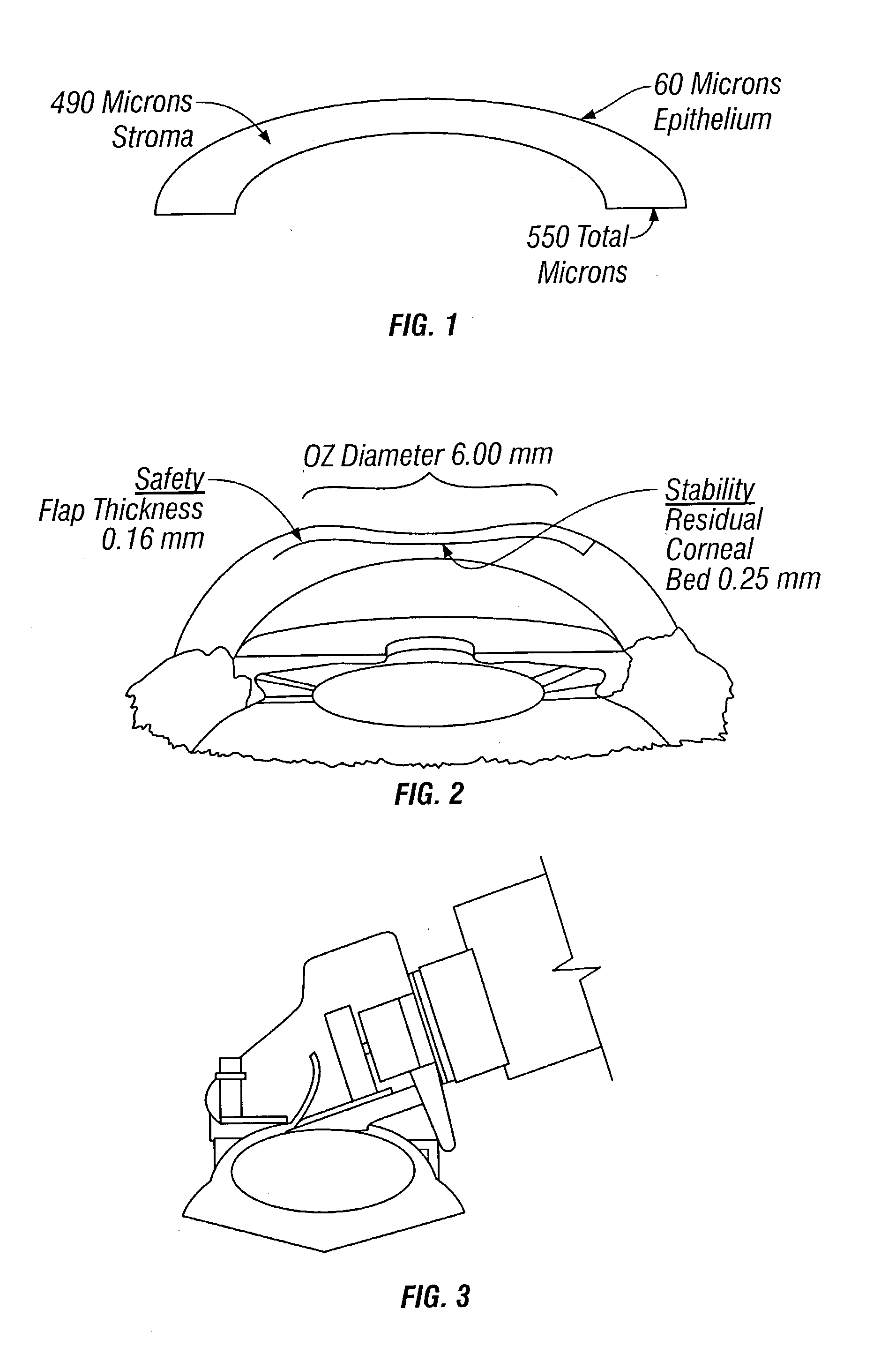Ultrasonic microkeratome
a microkeratome and ultrasonic technology, applied in the field of ultrasonic microkeratome, can solve the problems of low error margin, complex procedure and instrumentation, and inability to perform surgery with a single device,
- Summary
- Abstract
- Description
- Claims
- Application Information
AI Technical Summary
Problems solved by technology
Method used
Image
Examples
Embodiment Construction
[0035] The eye works on a principle very similar to that of a camera. The iris or colored portion of the eye about the pupil, functions like a shutter to regulate the amount of light admitted to the interior of the eye.
[0036] The cornea or clear window of the eye, and the lens, which is located behind the pupil, serve to focus the light rays from an object being viewed onto the retina at the back of the eye. The cornea is composed of five layers; first the epithelium that is five cells thick and is usually around 60 microns thick. A thin membrane called Bowman's membrane underlies the epithelium. The mass of the cornea is called the stroma, which is about 480 microns thick. The fourth layer is another, stronger but very thin membrane called Descemet's. The final layer is the endothelium, which is only one cell thick. Bowman's, Descemet's and the endothelium do not contribute significantly to the total cornea thickness. The total thickness of the cornea averages around 540 microns. O...
PUM
 Login to View More
Login to View More Abstract
Description
Claims
Application Information
 Login to View More
Login to View More - R&D
- Intellectual Property
- Life Sciences
- Materials
- Tech Scout
- Unparalleled Data Quality
- Higher Quality Content
- 60% Fewer Hallucinations
Browse by: Latest US Patents, China's latest patents, Technical Efficacy Thesaurus, Application Domain, Technology Topic, Popular Technical Reports.
© 2025 PatSnap. All rights reserved.Legal|Privacy policy|Modern Slavery Act Transparency Statement|Sitemap|About US| Contact US: help@patsnap.com



